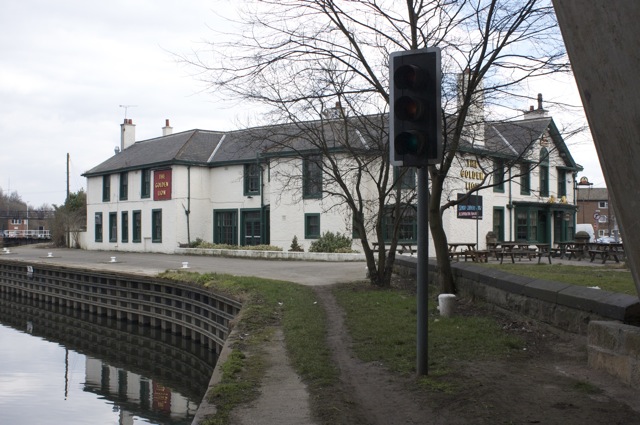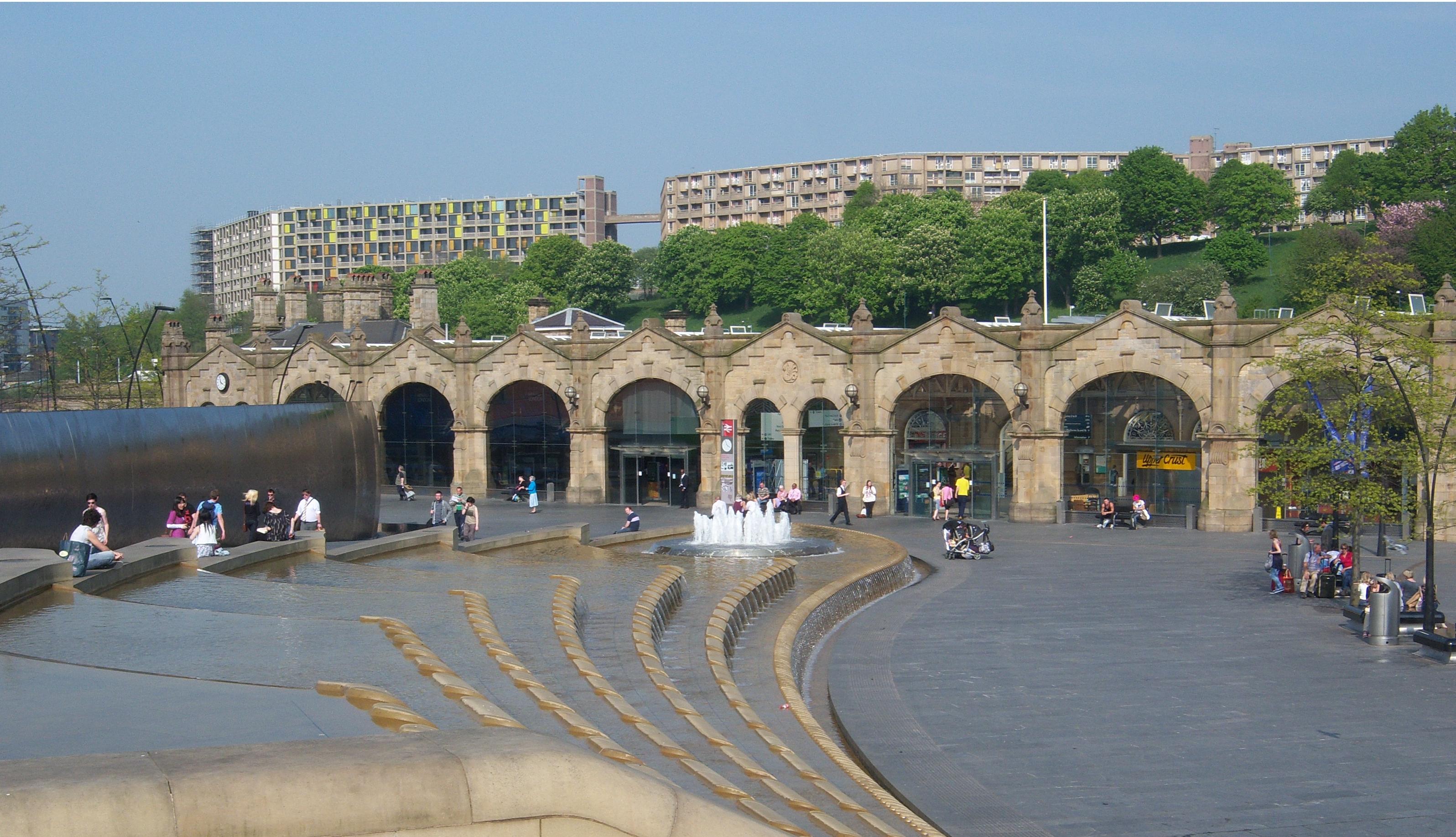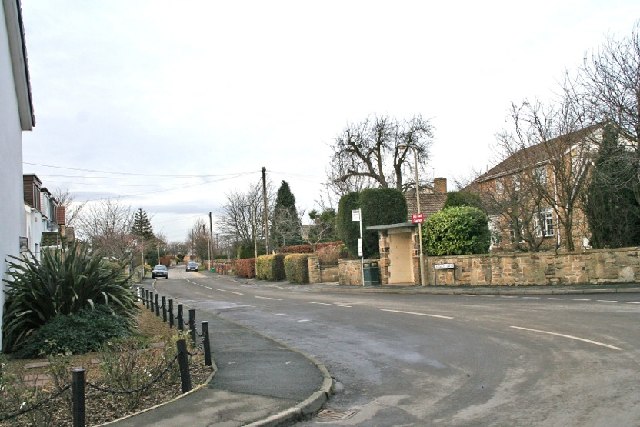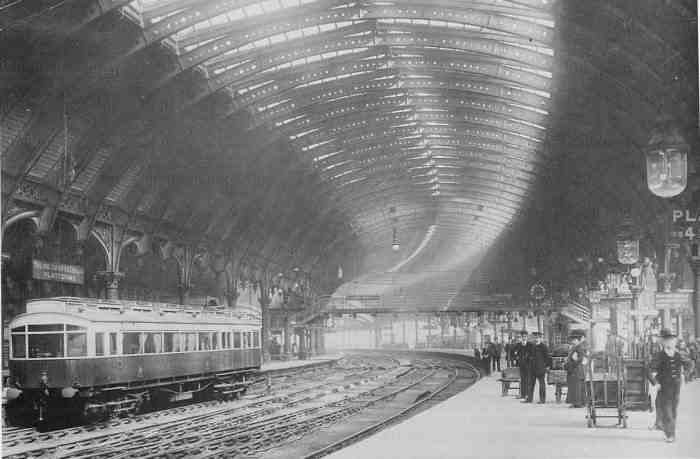|
Ferrybridge Railway Station
Ferrybridge railway station was a railway station located in Ferrybridge, West Yorkshire, England on the London and North Eastern Line. The station was opened in 1882 by the North Eastern Railway, three years after the completion of the Swinton & Knottingley Joint line via Moorthorpe on 1 May 1879 and closed in 1965. Location Ferrybridge railway station was located just north of Ferrybridge junction. From Ferrybridge railway station, stations such as Pontefract Baghill (which still remains open today) and Ackworth (closed in 1951) would be reached as well as other stations to Sheffield. Heading north from Ferrybridge stations such as (closed 1904), (closed 1959) and (closed 1959) could be reached, as well as other stations to York. History Prior to the opening of Ferrybridge railway station, there was no direct link between York and Knottingley. A link between Burton Salmon, Ferrybridge Ferrybridge is a village in West Yorkshire, England. Ferrybridge lies at a h ... [...More Info...] [...Related Items...] OR: [Wikipedia] [Google] [Baidu] |
Ferrybridge
Ferrybridge is a village in West Yorkshire, England. Ferrybridge lies at a historically important crossing of the River Aire which borders the North Yorkshire village of Brotherton. It is linked to other communities by the A1, which follows the route of the Great North Road. The village falls within the Knottingley ward of Wakefield City Council. The origin of the place-name is from Old Norse and means ''bridge by the ferry''. It appears as ''Ferie'' in the Domesday Book of 1086 and as ''Ferybrig'' in 1198. Geography and geology Geologically, Ferrybridge and Knottingley are located on rich soil, over a bed of Magnesian Limestone. The area is close to junctions of the M62 and A1(M) motorways; as well as junctions on the rail network, including northward to York, south to Pontefract (and Rotherham), west to both Wakefield and Leeds, east to Goole and south-east to the East Coast Main Line; the River Aire meets the Aire and Calder navigation close to the east of the town. Th ... [...More Info...] [...Related Items...] OR: [Wikipedia] [Google] [Baidu] |
Sheffield Railway Station
Sheffield station, formerly ''Pond Street'' and later ''Sheffield Midland'', is a combined railway station and tram stop in Sheffield, England; it is the busiest station in South Yorkshire. Adjacent is Sheffield station/Sheffield Hallam University Sheffield Supertram stop. In 2017–18, the station was the 43rd-busiest in the UK and the 15th-busiest outside London. History 1870 - 1960 The station was opened in 1870 by the Midland Railway to the designs of the company architect John Holloway Sanders. It was the fifth and last station to be built in Sheffield city centre. The station was built on the 'New Line', which ran between Grimesthorpe Junction, on the former Sheffield and Rotherham Railway, and Tapton Junction, just north of Chesterfield. This line replaced the Midland Railway's previous route, the 'old road', to London, which ran from Sheffield Wicker via Rotherham. The new line and station were built despite some controversy and opposition locally. The Duke of Norf ... [...More Info...] [...Related Items...] OR: [Wikipedia] [Google] [Baidu] |
Railway Stations In Great Britain Opened In 1882
Rail transport (also known as train transport) is a means of transport that transfers passengers and goods on wheeled vehicles running on rails, which are incorporated in tracks. In contrast to road transport, where the vehicles run on a prepared flat surface, rail vehicles (rolling stock) are directionally guided by the tracks on which they run. Tracks usually consist of steel rails, installed on sleepers (ties) set in ballast, on which the rolling stock, usually fitted with metal wheels, moves. Other variations are also possible, such as "slab track", in which the rails are fastened to a concrete foundation resting on a prepared subsurface. Rolling stock in a rail transport system generally encounters lower frictional resistance than rubber-tyred road vehicles, so passenger and freight cars (carriages and wagons) can be coupled into longer trains. The operation is carried out by a railway company, providing transport between train stations or freight customer faciliti ... [...More Info...] [...Related Items...] OR: [Wikipedia] [Google] [Baidu] |
Former Swinton And Knottingley Joint Railway Stations
A former is an object, such as a template, gauge or cutting die, which is used to form something such as a boat's hull. Typically, a former gives shape to a structure that may have complex curvature. A former may become an integral part of the finished structure, as in an aircraft fuselage, or it may be removable, being using in the construction process and then discarded or re-used. Aircraft formers Formers are used in the construction of aircraft fuselage, of which a typical fuselage has a series from the nose to the empennage, typically perpendicular to the longitudinal axis of the aircraft. The primary purpose of formers is to establish the shape of the fuselage and reduce the column length of stringers to prevent instability. Formers are typically attached to longerons, which support the skin of the aircraft. The "former-and-longeron" technique (also called stations and stringers) was adopted from boat construction, and was typical of light aircraft built until the ... [...More Info...] [...Related Items...] OR: [Wikipedia] [Google] [Baidu] |
York And North Midland Railway
The York and North Midland Railway (Y&NMR) was an English railway company that opened in 1839 connecting York with the Leeds and Selby Railway, and in 1840 extended this line to meet the North Midland Railway at Normanton near Leeds. Its first chairman was the railway financier George Hudson, who had been called the railway king. The railway expanded, by building new lines or buying or leasing already built ones, to serve Hull, Scarborough, Whitby, Market Weighton and Harrogate. In 1849 Hudson resigned as chairman as an investigation found financial irregularities in his running of the company. The results of a price war in the early 1850s led to amalgamation and on 31 July 1854 the Y&NMR merged with the Leeds Northern Railway and the York, Newcastle & Berwick Railway to form the North Eastern Railway. Origins Having seen the success of the Liverpool and Manchester Railway and, in 1833, Acts of Parliament for lines to London from Lancashire – the Grand Junction and ... [...More Info...] [...Related Items...] OR: [Wikipedia] [Google] [Baidu] |
Knottingley Railway Station
Knottingley railway station serves the town of Knottingley in West Yorkshire, England. It lies on the Pontefract Line, operated by Northern, and is south east of Leeds railway station. The station is the final one in West Yorkshire before the North Yorkshire border and most services terminate (or start) there. History The station was constructed by the ''Wakefield, Pontefract & Goole Railway'' as part of their main line from Wakefield to Goole, which opened in April 1848. It was not long though before it became a busy junction, as within two years links to Doncaster via the Askern branch (on 6 June 1848), Leeds via Castleford and ''Methley Junction'' (1 December 1849) and York via Ferrybridge and Burton Salmon (1 August 1850) had all been opened. The first of those was jointly built and operated by the Lancashire and Yorkshire Railway and Great Northern Railway and the station also became jointly managed by these two companies in 1854. The Great Northern made use of its ... [...More Info...] [...Related Items...] OR: [Wikipedia] [Google] [Baidu] |
Burton Salmon
Burton Salmon is a village and civil parish in the Selby (district), Selby district of North Yorkshire, England, close to the border with West Yorkshire, and approximately north from Knottingley, on the A162 road. According to the 2001 Census the parish had a population of 419, reducing slightly to 416 at the 2011 Census. It was historically part of the West Riding of Yorkshire until 1974. The village primary school is Burton Salmon Community Primary School. There is also a public house, The Plough Inn, dating from the 17th century, and a Methodist chapel. Toponymy The place name "Burton Salmon" is formed of two elements. The first originates in Old English and translates as "farmstead of the Britons" (''Brettas'', genitive ''Bretta'') plus the word ''tūn'', meaning "farmstead, village, settlement". The second element, "Salmon" is a manorial affix, derived from the name ''Salamone'', that of a man who held lands in the area in the 13th century. Although not mentioned ... [...More Info...] [...Related Items...] OR: [Wikipedia] [Google] [Baidu] |
Knottingley
Knottingley is a market town in the City of Wakefield in West Yorkshire, England on the River Aire and the old A1 road (Great Britain), A1 road before it was bypassed as the A1(M). Historic counties of England, Historically part of the West Riding of Yorkshire, it has a population of 13,503, increasing to 13,710 for the City of Wakefield ward at the 2011 Census. It makes up the majority of the Knottingley (electoral ward), Knottingley ward represented on Wakefield Council. Until 1699, it was an important inland river port but, in that year, the Aire was made navigability, navigable as far as Leeds, which soon surpassed it. Knottingley continued as a centre for boat building into the 20th century. In the late 19th century, it started glass manufacturing. The town is served by Knottingley railway station. After 1870, the town became known for glass manufacturing. In 1887 Bagley's Glassworks purchased the rights to the first bottle-making machine, invented by a Ferrybridge postmast ... [...More Info...] [...Related Items...] OR: [Wikipedia] [Google] [Baidu] |
York
York is a cathedral city with Roman origins, sited at the confluence of the rivers Ouse and Foss in North Yorkshire, England. It is the historic county town of Yorkshire. The city has many historic buildings and other structures, such as a minster, castle, and city walls. It is the largest settlement and the administrative centre of the wider City of York district. The city was founded under the name of Eboracum in 71 AD. It then became the capital of the Roman province of Britannia Inferior, and later of the kingdoms of Deira, Northumbria, and Scandinavian York. In the Middle Ages, it became the northern England ecclesiastical province's centre, and grew as a wool-trading centre. In the 19th century, it became a major railway network hub and confectionery manufacturing centre. During the Second World War, part of the Baedeker Blitz bombed the city; it was less affected by the war than other northern cities, with several historic buildings being gutted and restore ... [...More Info...] [...Related Items...] OR: [Wikipedia] [Google] [Baidu] |
York Railway Station
York railway station is on the East Coast Main Line serving the city of York, North Yorkshire, England. It is north of and on the main line it is situated between to the south and to the north. , the station is operated by London North Eastern Railway. York station is a key junction approximately halfway between London and Edinburgh. It is approximately north of the point where the Cross Country and TransPennine Express routes via Leeds join the main line, connecting Scotland and the North East, North West, Midlands and southern England. The junction was historically a major site for rolling stock manufacture, maintenance and repair. In ''Britain's 100 Best Railway Stations'' by Simon Jenkins, the station was one of only ten to be awarded five stars. History The first York railway station was a temporary wooden building on Queen Street outside the walls of the city, opened in 1839 by the York and North Midland Railway. It was succeeded in 1841, inside the walls, by wha ... [...More Info...] [...Related Items...] OR: [Wikipedia] [Google] [Baidu] |
Ackworth Railway Station
Ackworth railway station was a railway station serving Ackworth in the English county of West Yorkshire. History The station was opened by the Swinton and Knottingley Joint Railway, which became a joint railway between the London, Midland and Scottish Railway and the London and North Eastern Railway during the Grouping of 1923. The station then passed on to the Eastern Region of British Railways on nationalisation in 1948. The station was then closed by British Railways British Railways (BR), which from 1965 traded as British Rail, was a state-owned company that operated most of the overground rail transport in Great Britain from 1948 to 1997. It was formed from the nationalisation of the Big Four British rai .... Site today Trains pass on the Dearne Valley line, but there is no longer a station at Ackworth. References * * * Service External links Station on navigable O.S. map Disused railway stations in Wakefield Former Swinton and Knottingley Joint Rail ... [...More Info...] [...Related Items...] OR: [Wikipedia] [Google] [Baidu] |



.jpg)


.jpg)

